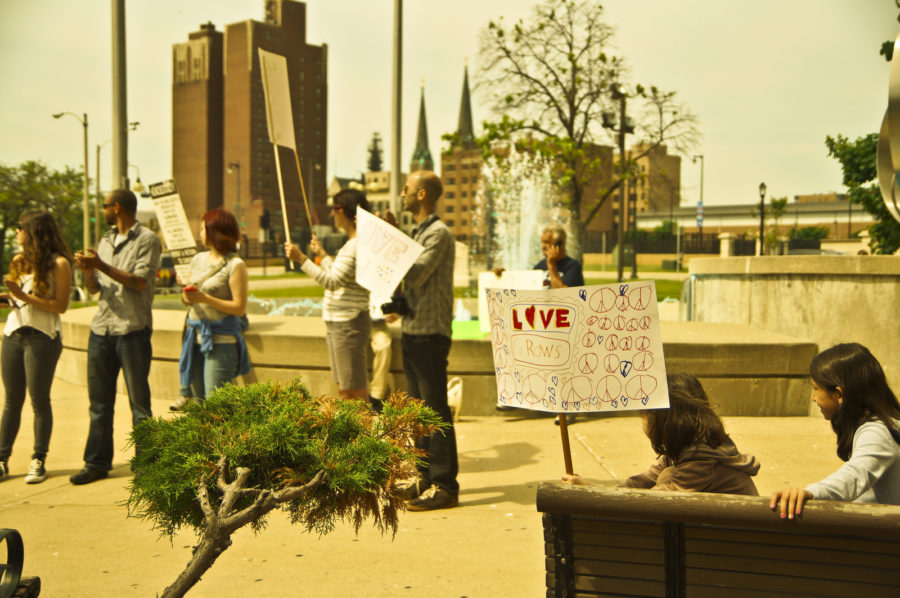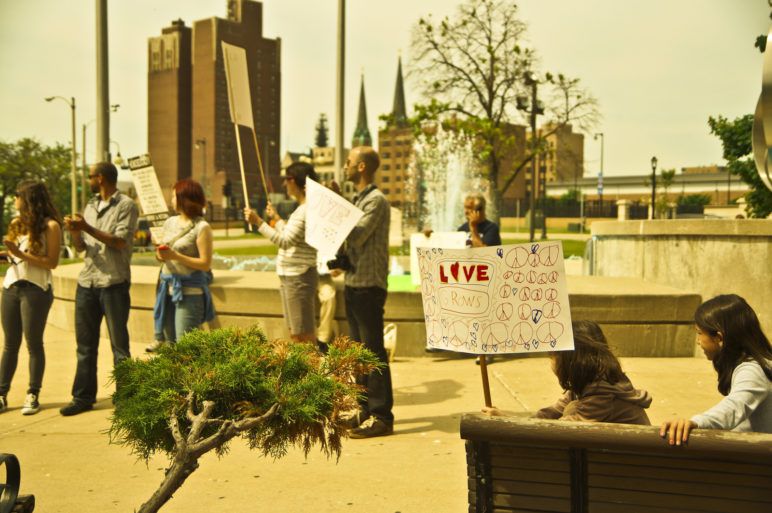Anna
Don’t stand between a baby and its mama. This mantra goes for wild animals, of course—polar bears come to mind; don’t mess with them—but humans too as it turns out. Here’s an excellent snapshot of the many powerful ways moms—and women in general—are motivated and activated around climate protections.
Speaking of mamas and their babies, David Hochschild, the environmental commissioner on the California Energy Commission and an architect of Proposition B, San Francisco’s successful $100 million solar initiative, makes the case for moving the needle on climate concern and solutions in the way that campaigns mainstreamed marriage equality. “I think there’s actually some lessons for the climate movement in what happened with marriage equality, because they framed the movement in terms of love: Government has no place to get between two people who love each other,” he said. “I actually think climate change is the same thing. It’s about loving the next generation, and I think that is a good way to think about it.” You can watch his talk here.
And Haley Littleton has a beautiful essay on love as a framework for environmental involvement.
(And PS, I wouldn’t have read that one if I weren’t a follower of @Sightline on Twitter. Just sayin’.)
And please take a moment to watch this short clip of the many people who came to a livestream event in Ithaca, NY, on Inauguration Day as part of ACLU Nationwide‘s initiative to encourage citizens to stand and be counted, declaring their personal commitment to the Constitution. It’s powerful. (Full disclosure: This film features one of my favorite relations, my dad’s cousin, and is made by his brilliant wife and her outfit PhotoSynthesis Productions.) #peoplesoath
Eric
It’s not too early to start making your summer vacation plans. I, for one, will be in the Central Oregon desert at 10 am on August 21 when the first total solar eclipse in the United States in 26 years will race across the Northwest. Before you go, however, you are required to read Annie Dillard’s magnificent essay, “Total Eclipse,” about the 1979 episode near Yakima, Washington. It feels sacrilegious to excerpt her, but I’ll do it anyway:
I had seen a partial eclipse in 1970. A partial eclipse is very interesting. It bears almost no relation to a total eclipse. Seeing a partial eclipse bears the same relation to seeing a total eclipse as kissing a man does to marrying him, or as flying in an airplane does to falling out of an airplane. Although the one experience precedes the other, it in no way prepares you for it…
“Look at Mount Adams,” I said, and that was the last sane moment I remember.
I turned back to the sun. It was going. The sun was going, and the world was wrong. The grasses were wrong; they were platinum. Their every detail of stem, head, and blade shone lightless and artificially distinct as an art photographer’s platinum print. This color has never been seen on earth…
From all the hills came screams. A piece of sky beside the crescent sun was detaching. It was a loosened circle of evening sky, suddenly lighted from the back. It was an abrupt black body out of nowhere; it was a flat disk; it was almost over the sun. That is when there were screams. At once this disk of sky slid over the sun like a lid. The sky snapped over the sun like a lens cover. The hatch in the brain slammed.
The full piece is contained in her book of essays Teaching a Stone to Talk.
It’s almost a year old now, but I highly recommend this piece at Breitbart—yes, that Breitbart—by Allum Bokhari and Milo Yiannopoulos about what the alt-right is and is not. Among my 2017 resolutions is to read more widely, especially un-redacted original pieces by people I strongly disagree with. Curiously, I found that I didn’t object to every point they make (just the vast majority of them).
I can’t stop laughing about this brilliant PSA-style ad campaign for YIMBYs: “it’s time to talk about zoning.”

YIMBY PSA by Neighbors for More Neighbors (Used with permission.)
Sightline alum Samir Junejo just published an intriguing equity analysis of toxic sites in Washington and how the state regulates (and taxes) them. It’s important research from climate justice group Front and Centered.
The fact that he is, to me, always “Omar from The Wire” goes to the heart of the question that the actor Michael K. Williams wrestles with in this brilliant short video at the Atlantic.
Kristin E.
The secret of Nordic democratic socialism: a deep commitment to equality and democracy. Because you can’t really have one without the other. Combining the best of capitalism and socialism, Scandinavian countries make capitalism cooperative and “redistribute equitably the wealth it helps to produce.” Sigh.
Mr. Money Mustache, one of my favorite bloggers, just read a book about urban planning. He retired at 30 through “badass” frugality, and he has some advice for American cities: spending almost half our tax dollars paving over our living spaces or dealing with the consequences of the isolated sedentary lifestyle resulting from paving over our living spaces is not a good use of money.
Aven
There’s so much in the news these days that’s depressing, so I’ve made a habit of seeking out some positive news to try and counterbalance the despair a little. This week I learned that Rhinoceroses, although they are still doing poorly in Africa and Indonesia, are actually making a comeback in Nepal. The country just announced its fourth consecutive zero-poaching year, and the program is being explored as a model for other extremely endangered species, like tigers and elephants. Besides preventing poaching, the program gives money to local communities to promote economic development as well as conservation. I hope governments and NGOs alike are taking notes.
In more local news, independent bookstores are joining the resistance.
Kristin G.
I’ve always been a bit curious about substitute teachers, even as a youngster. Who are they? Where do they come from? These questions were always followed by the hope that we would skip the math lesson and watch Voyage of the Mimi instead.
What I didn’t realize is that there are many complications that can occur when a teacher needs to find a sub. Is a lesson plan ready? Are there even any subs available? One startup may be in a unique position to help schools have broader access to a new type of substitute teacher. Parachute Teachers helps connect schools to community members interested in bringing their talents into the classrooms. Will it work? Perhaps one day we’ll find out.










